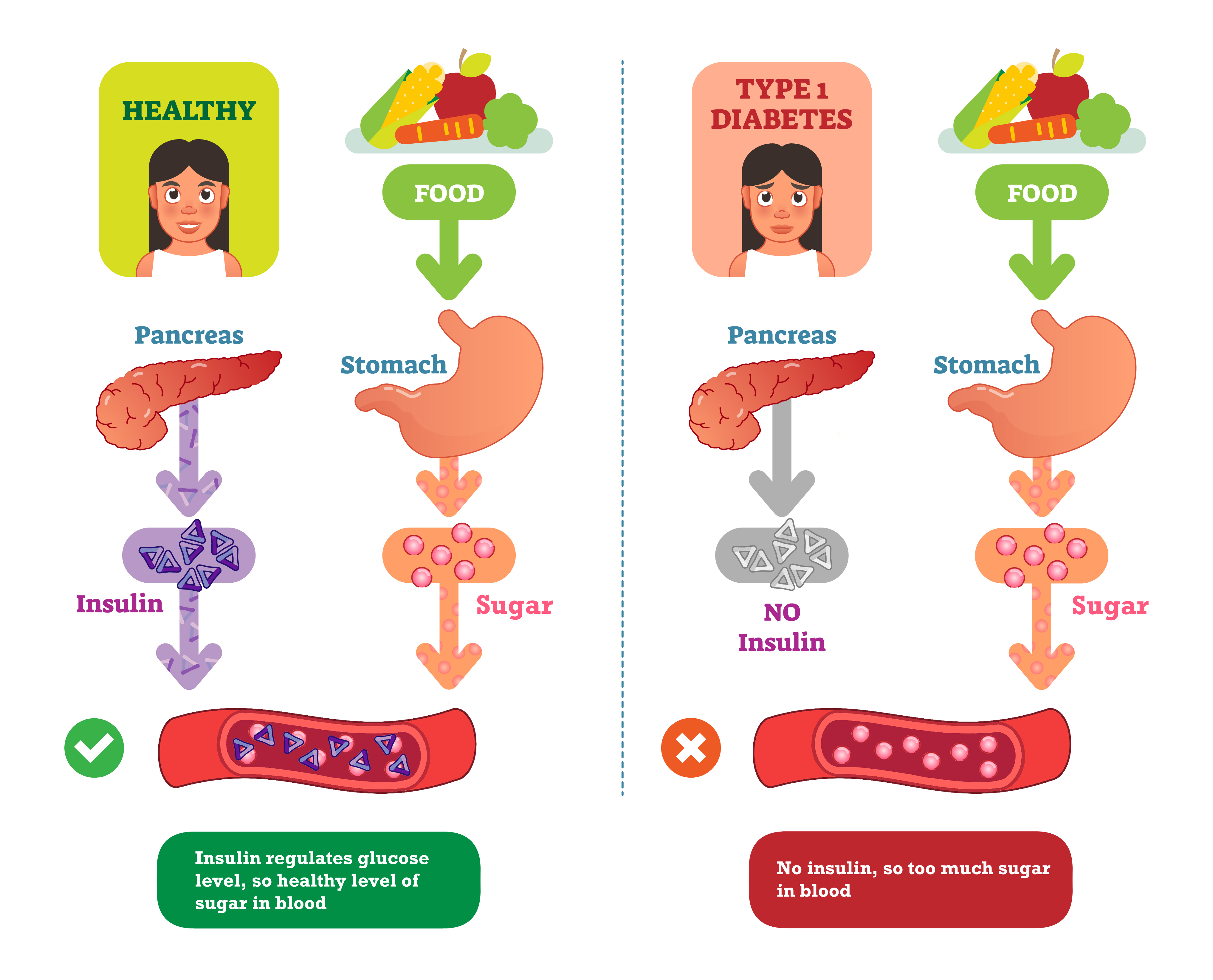Diabetes is a chronic condition of high blood glucose levels.1-3 It is due to low or no levels of insulin, insulin resistance, or both. Most cases of type 1 diabetes are due to autoimmune or idiopathic destruction of insulin-producing β-cells in the pancreas which leads to complete insulin deficiency.2-5 Markers of β-cell immune destruction are present in 90% of people at diagnosis. They include autoantibodies to insulin, GAD65, tyrosine phosphatases IA-2 and IA 2β, and islet cells.2,5,6
People with type 1 diabetes are insulin-dependent.2,4 Genetic, environmental, or viral factors are thought to play a role in the development of both autoimmune and idiopathic type 1 diabetes.2,7,8
Without good glucose control, people with diabetes have a much higher risk of diabetes-related complications such as:1,4,9
- Hyperglycemic and hypoglycemic crises requiring emergency help or hospital treatment
- Cardiovascular disease (heart attack, stroke, ischemic heart disease)
- Kidney disease and failure
- Vision loss and blindness
- Neurological disease
- Sexual dysfunction
- Dental problems
- Foot ulcers and amputations
It is estimated that 34.2 million adult Americans (6.7 out of every 1000 people) have diabetes of which 90% to 95% of diagnosed cases are type 2 diabetes (T2DM.)9 Out of that 34 million, it is estimated that about 7.3 million adults are undiagnosed and likely have T2DM. About 1.4 million out of the 34 million have type 1 diabetes. About 1.5 million adults are newly diagnosed with diabetes every year with the majority being 45 years or older.
References
- Vijan S. Type 2 diabetes. Ann Intern Med 2019; 171 (9): Itc65-itc80.
- Classification and diagnosis of diabetes: standards of medical care in diabetes-2020. Diabetes Care 2020; 43 (Suppl 1): S14-s31.
- Thomas NJ, Lynam AL, Hill AV, et al. Type 1 diabetes defined by severe insulin deficiency occurs after 30 years of age and is commonly treated as type 2 diabetes. Diabetologia 2019; 62 (7): 1167-1172.
- National Institute of Diabetes and Digestive and Kidney Diseases. What is diabetes? 2016; https://www.niddk.nih.gov/health-information/diabetes/overview/what-is-diabetes. Accessed January 16, 2020.
- 2. Classification and Diagnosis of Diabetes: Standards of Medical Care in Diabetes—2021. Diabetes Care 2021; 44 (Supplement 1): S15-S33.
- Solis-Herrera C TC, Reasner C. Classification of Diabetes Mellitus. Feingold KR AB, Boyce A, ed. Endotext [Internet]. South Darthmouth, MA: MDText.com, Inc; 2018.
- Thomas NJ, Jones SE, Weedon MN, et al. Frequency and phenotype of type 1 diabetes in the first six decades of life: a cross-sectional, genetically stratified survival analysis from UK Biobank. Lancet Diabetes Endocrinol 2018; 6 (2): 122-129.
- Filippi CM, von Herrath MG. Viral trigger for type 1 diabetes: pros and cons. Diabetes 2008; 57 (11): 2863-2871.
- National Diabetes Statistics Report. Atlanta, GA: Centers for Disease Control and Prevention, U.S. Dept of Health and Human Services; 2020.

.png)
